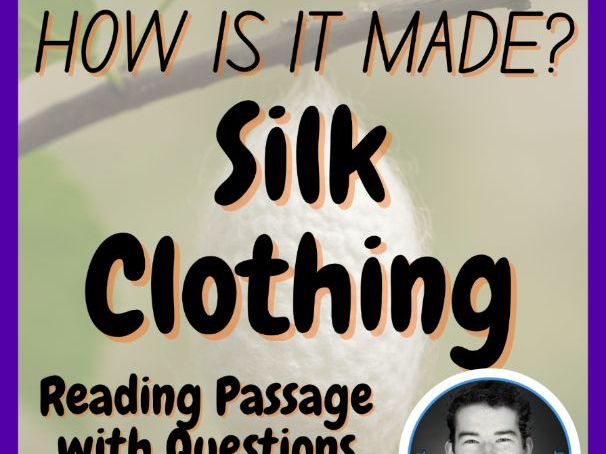

Studying how silk clothing is made gives middle and high school design, technology, and STEM students a concrete look at materials science, engineering processes, and sustainable manufacturing from cocoon to closet. A focused reading passage with questions guides learners through the base of learning to understand sericulture, fiber extraction, spinning, weaving, dyeing, finishing, and quality control while preparing students to connect each stage to the design cycle, user needs, and real world constraints. This approach strengthens literacy in technical vocabulary, builds data analysis and cause and effect reasoning, and invites discussion of ethics, environmental impact, and global supply chains. It fits neatly into design and technology units on textiles, prototyping, and product development, supports cross curricular links with science and geography, and works for quick lessons, cover work, or deeper projects. With clear comprehension checks and critical thinking prompts, students can compare natural silk to synthetic fibers, evaluate performance and durability, and propose improvements that reflect authentic industry practice. This ready to use classroom reading helps teachers deliver engaging, standards aligned learning while developing creativity, problem solving, and informed decision making in the workshop and beyond. This process is a great one to learn about and so with that in mind, let’s look into this topic with my useful resource here.
This How is it made? article provides the perfect grab and go, print and provide resource that can supplement lessons. It is an article with questions to check comprehension and inspire design and production thinking. I am very proud of this series of how is it made? articles and they are rich with information and wonder at the majesty of design, production and the manufacturing process.
Each how is it made? article includes a fun fact(s) to add to the knowledge gained from this article. Formatted in an easy to read and digest manner, each paragraph is numbered to help with referencing and each question answer has a paragraph reference number to point to the specific information (where applicable). Two images also to inspire students and get them interested in the subject topic.
WHY / WHEN TO USE:
- Useful for substitute (sub) teaching
- To enhance design / product thinking / STEM education
- To extend students
- To increase technical literacy in your class
- A weekly reading task
- Great as a lesson filler when class goes too fast
- To inspire students on a particular topic
- Give a selection of these articles for students to choose from
Something went wrong, please try again later.
This resource hasn't been reviewed yet
To ensure quality for our reviews, only customers who have purchased this resource can review it
to let us know if it violates our terms and conditions.
Our customer service team will review your report and will be in touch.